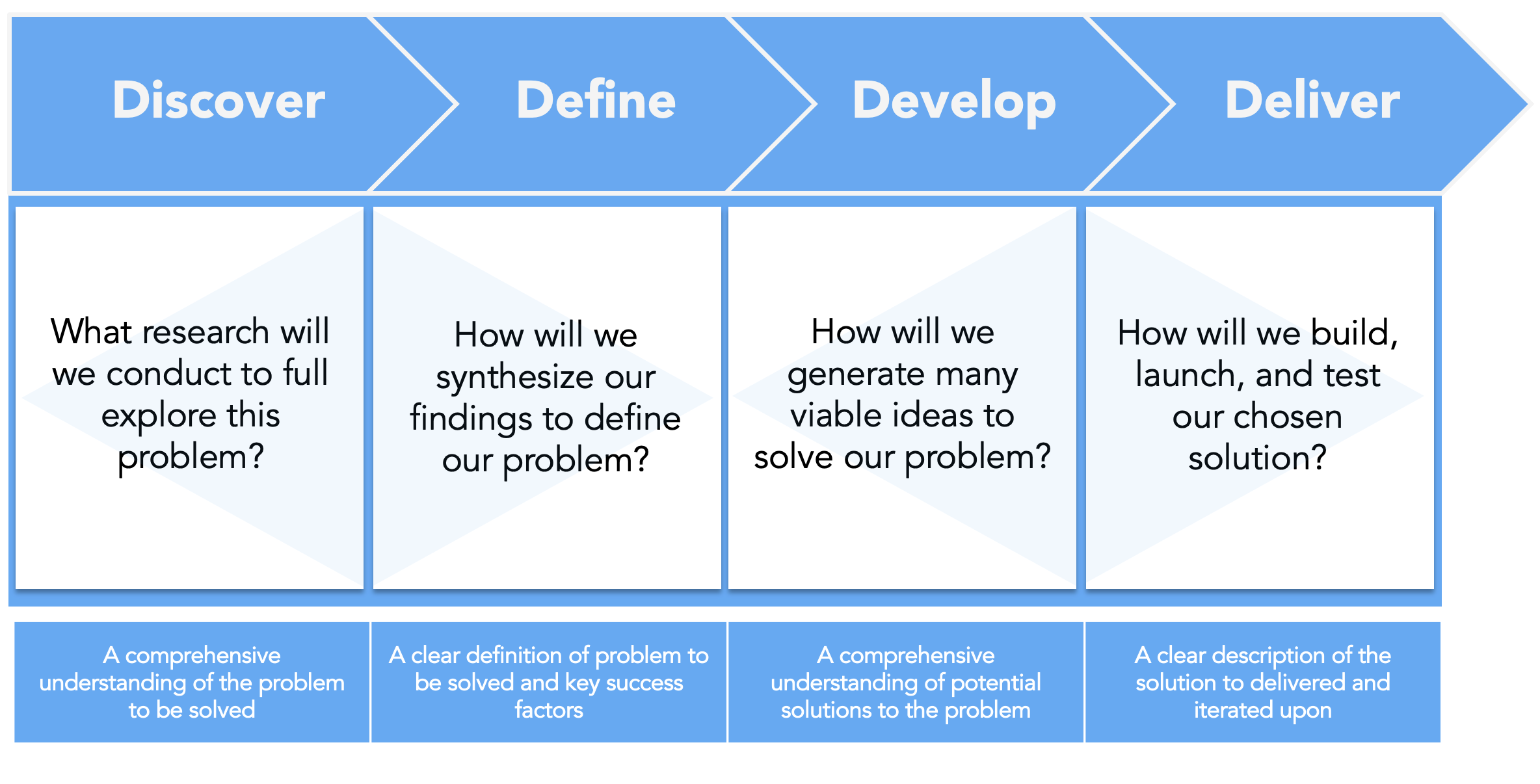Description
The purpose of the Double Diamond Design Process is to plan how a new product or service will be created, from start to finish. This process describes how teams must diverge at certain points to explore findings and potential solutions. At other points, teams must converge to define a problem and identify the solution to create. Convergence is visualized by the widening of the diamonds, divergence by narrowing. The output of one phase is the input to the next phase. Most marketing teams and agencies have their own proprietary processes that reflect these phases. Regardless of your process, it is critical to establish an overall plan upfront for new projects to align and orient teams throughout.
Question
What process are we following to create our solution?
Steps
To start, make sure that you have clearly documented the goal, scope, and other important considerations relating to the project you are planning for. Try not to be too confining or prescriptive.
Capture the tasks that you will conduct as part of your Discover phase. This likely includes a mix of research activities. What will you do to fully understand the problem and not proceed with assumptions?
Capture how you will synthesize and use the findings from Discover in your Define phase. This likely involves clustering your findings into themes to help narrow down your core problem to be solved.
Capture how you will generate ideas for potential solutions to your problem in your Develop Phase. This likely involves a mix of brainstorming and ideation activities. Involve diverse participants for a broader range.
Determine how you will choose and develop a solution from Develop in the Deliver Phase. If you are planning to release and iterate on an early version of the solution, make sure to capture these steps.
Considerations
When starting a new phase, make sure everyone is clear you are transitioning between divergent and convergent thinking
Projects with a tight scope will require less divergent activities than those that are less defined
Deliver does not necessarily mean done; capture how your solution may be tested and optimized over time
References
The Double Diamond was popularized by the British Design Council
The visual divergence-convergence model is credited to Bela Bethany

